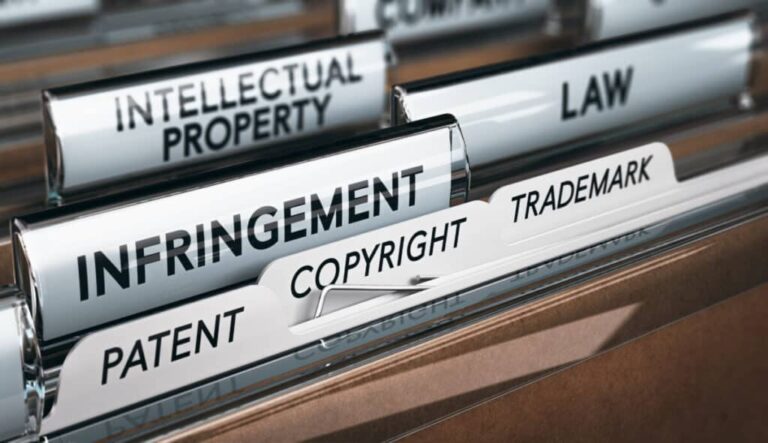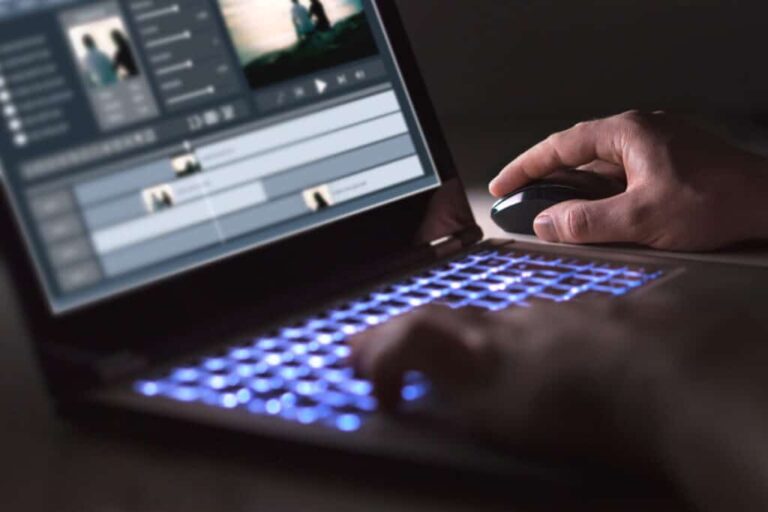When producing videos on YouTube, it is crucial to be aware of fair use and copyright laws. Understanding these laws could mean the difference between you and a lawsuit. Using a YouTube disclaimer is the best way to protect yourself from legal action.
When writing a YouTube disclaimer, know the reason behind the notice. If it’s to protect copyright materials, include the channel/business name, the year of production, and copyright notice. Meanwhile, fair use disclaimers state that the creator does not own the content reproduced in their video.
While there are a few basic principles to use for a YouTube disclaimer, every channel’s version will be unique. Keep reading to learn how to write the perfect disclaimer for your YouTube videos.
What Is a YouTube Disclaimer and Why Does It Matter?
There are several different types of YouTube disclaimers. These disclaimers cover various topics, such as copyright, fair use, liability, and licensing. Let’s take a closer look at each of these disclaimer types and when you should use them below.
Copyright and Fair Use Disclaimers
When someone has a “copyright” of something, their creation is protected from unauthorized reproductions. Copyrighted material on YouTube includes published videos and the sound associated with them. Reposting another person’s video would violate copyright laws, leading to legal action.
The only exception to copyright laws is “fair use.” Fair use allows someone to reuse the material without permission from the owner. You have to be careful when dealing with fair use as it isn’t always clear what’s legal.
In most cases, fair use doesn’t cover music. If you want to use music in your YouTube videos, there are a few options. You can write the music yourself, pay to use someone else’s, or find something in the YouTube Audio Library.
If you reuse someone’s work beyond fair use, you could find yourself in a serious situation. Watch the following video to learn what happens when copyright gets violated.
To reuse someone else’s work, it needs to be substantially different. Fair use also applies to using someone’s content to criticize or comment on it. That said, don’t push your luck by using too much of their creation. Using too much could violate copyright laws.
Other exceptions to copyright laws include researching, teaching, or news reporting.
Putting a copyright disclaimer on your video prevents others from using your videos for their own (of course, fair use would allow them to still).
A copyright disclaimer is just a redundancy. Once you publish your creation, it becomes your intellectual creation, and copyright laws apply.
So what about a fair use disclaimer? Do you need to use one when commenting on or criticizing someone’s work? While it’s not necessary, it’s definitely a good idea.
This disclaimer tells viewers that not all the featured work is your own and notifies the original authors that you’re using it under fair use.
Liability Disclaimers
Have you ever felt responsible when things don’t turn out right after giving a friend advice? Lawyers aren’t going to bust down your door for telling your neighbor to water their lawn every day and their grass dying as a result. However, when you post advice in a YouTube video–especially a monetized video–you take on more responsibility for your words.
The law refers to this responsibility as “liability.” In other words, if you post a video describing how cutting the seatbelts out of your car improves gas mileage, and someone gets hurt in a crash, you could be liable.
Anytime you’re acting as an “expert” or are giving advice, you could be liable for your words. For example, if you run a health foods channel, disclaimers stating that you aren’t a licensed nutritionist are crucial to avoiding a lawsuit.
A liability disclaimer informs viewers that you aren’t an expert (or are an expert) and won’t be held responsible for the results of your advice. In other words, viewers should take what you’re saying very cautiously.
If you recommend products in your YouTube videos, chances are you use affiliate links. (If not, you really should be.) Be sure to add a disclaimer explaining your use of affiliate links and how they don’t affect what the viewer pays. You may also want to write whether you received sponsorship payments for mentioning any products during the video.
Licensing Disclaimer
Using someone else’s music is an easy way to get caught up in a copyright lawsuit. If you use someone else’s song, purchase the proper license and put a disclaimer in the description.
But what about all those cover songs on the internet? Do those violate licensing and copyright laws?
Actually, no. Fair use laws generally protect when someone produces a cover of a popular song. Remember, it only needs to be substantially different.
The fact that the cover artist is singing it is a substantial difference. Additionally, cover artists tend to play a single instrument while singing; meanwhile, the published song uses a whole band. This is yet another difference. The more different the pieces are, the less likely a cover is to infringe on copyright laws.
When publishing a cover video, include a short fair use disclaimer.
How to Write a YouTube Disclaimer

Okay, so now you know why it is important to include disclaimers on your YouTube videos. You even know what type of disclaimer to use and when. Knowing how to write a disclaimer for your YouTube videos is the final piece of the puzzle. Without a well-written disclaimer, you could end up in legal trouble.
The information you need to include in your YouTube disclaimer varies depending on its purpose. For example, a fair use disclaimer and a liability disclaimer will use different content. Let’s look at how to write the various disclaimers for your YouTube videos below.
Copyright Disclaimer
So you want to prevent others from reusing your YouTube video. A copyright disclaimer is a perfect choice. Writing a copyright disclaimer is very simple.
In some cases, you could just write the word “Copyright.” However, you’ll probably prefer a more professional-looking disclaimer.
Start with the word “Copyright.” You could also use the copyright symbol: ©. Follow this up with the year the video was published and the name of your business, or in this case channel. And that’s it! You’ve got a copyright disclaimer. You could follow this up with the phrase “all rights reserved” to make it clear you own this work. This will look like the following:
“Copyright 2022, Channel Makers. All rights reserved.” or “© 2022, Channel Makers.”
Choose the format that looks best with your video. You could also write out that reproduction without your written permission violates copyright laws. Once again, it’s your choice.
Fair Use Disclaimer
Writing a fair use disclaimer is a bit more complicated because this law can be fairly subjective.
This disclaimer should explain that you believe you are operating under fair use laws and in no way intend to violate copyright. To further avoid any litigation, ask the former creators to contact you before filing any copyright strike. If they know you’re willing to remove the content or at least give them credit, they are less likely to make a fuss. A properly written fair use disclaimer may look like the following:
“Disclaimer: Channel Makers does not own the right to the video clips used in this video. Use of these clips follows Fair Use laws regarding commenting and criticizing. Contact Channel Makers directly to discuss receiving credit or removing the featured content.”
It is important to keep in mind that even the best fair use disclaimer will not protect you from copyright infringement. This disclaimer merely shows that you meant no harm by reusing someone’s footage. However, a disclaimer paired with an entirely copied video will result in a copyright lawsuit.
Liability Disclaimer
Including a liability disclaimer is like having your viewers all sign a waiver before watching your video. If your video features products or advice, include a disclaimer.
At the bottom of a Channel Makers video, you’ll always see a disclaimer. This disclaimer is titled “Legal Notice.” Find the disclaimer at the bottom of this Channel Makers’ video!
Because Channel Makers provides advice about growing a YouTube channel, it is essential to notify viewers that sometimes things don’t always work out. In Project 24’s case, it requires significant effort from participants for things to work out.
A liability disclaimer should explain that the advice and/or products mentioned in your video don’t always work. This is especially important when giving legal or health advice. Explain that you are not an expert or that the viewer should consult an expert–in addition to watching your video, of course.
Licensing Disclaimer
If you purchase the license to use someone else’s copyrighted material (such as music), you probably won’t need a licensing disclaimer. However, speak with the company you’re licensing the material through to make sure they don’t require a notice of use.
If you want to avoid any accusations of copyright infringement, include the limited details about the licensing agreement you have.




